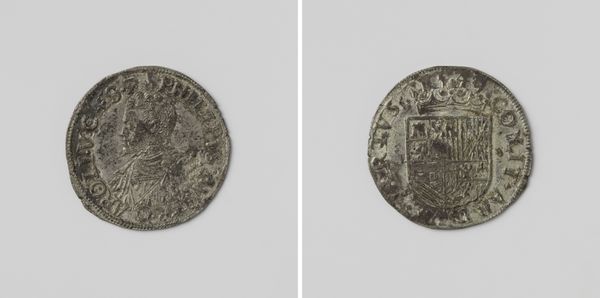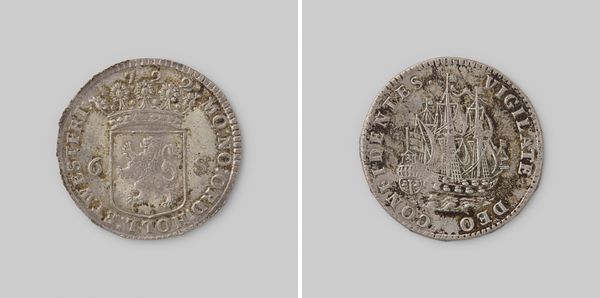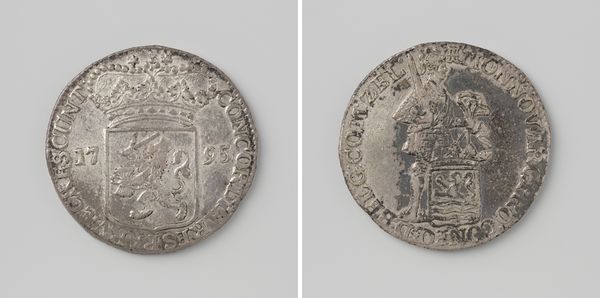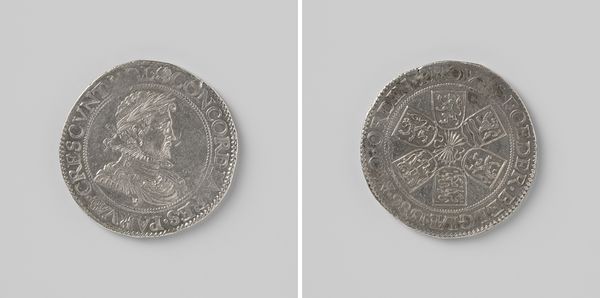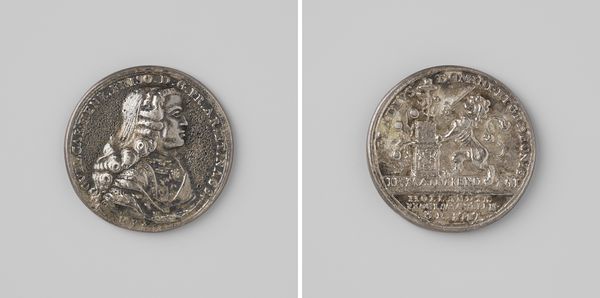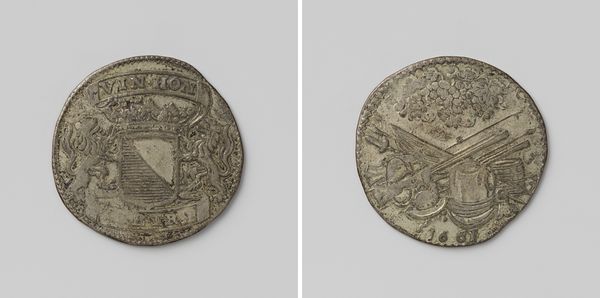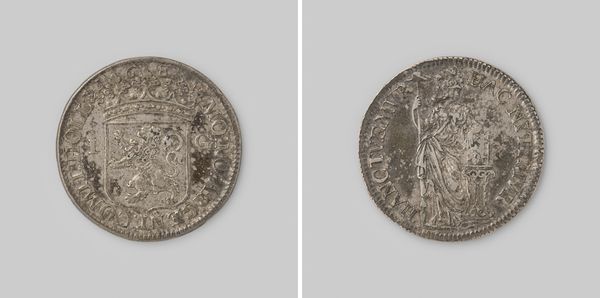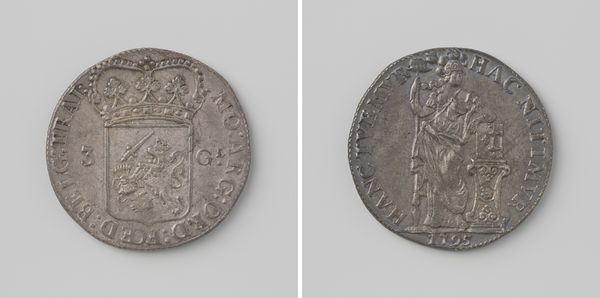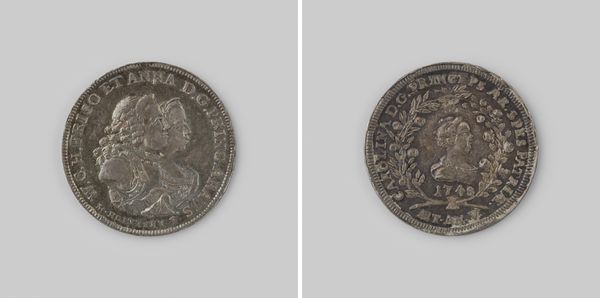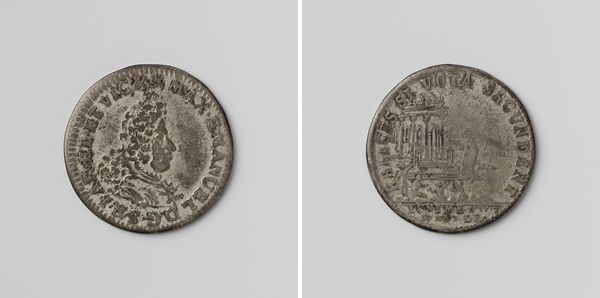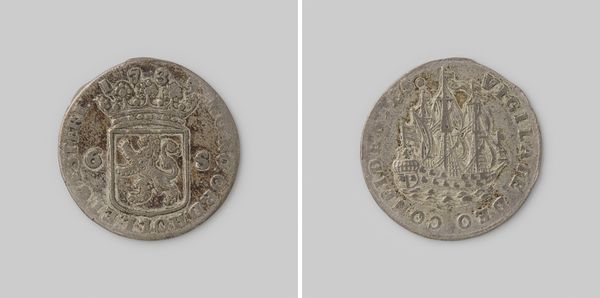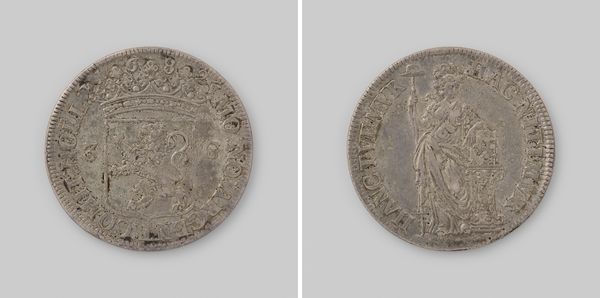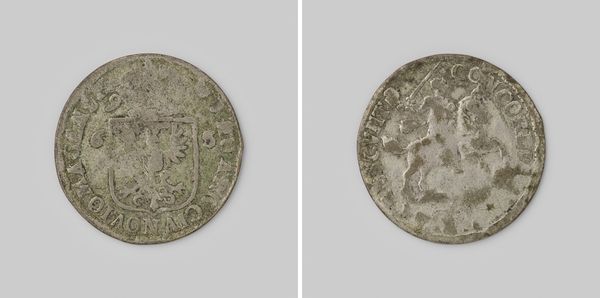
print, metal, relief, embossing, sculpture, engraving
#
decorative element
#
baroque
# print
#
metal
#
relief
#
embossing
#
sculpture
#
decorative-art
#
engraving
#
decorative art
Dimensions: diameter 2.7 cm, weight 54.67 gr
Copyright: Rijks Museum: Open Domain
Editor: This is a Dutch "Scheepjesschelling" from 1724, a coin minted by the province of Holland. It’s made of metal, obviously, and it's really small. What strikes me is the level of detail they were able to achieve on such a tiny surface. What can you tell me about it? Curator: It’s interesting to think of this coin, this material object, not just as a symbol of wealth or trade, but also a product of specific labor. What processes were required to extract, refine, and mint the metal? Who were the workers? And how were they compensated? The value wasn't just in the coin's face value, but in the human effort embodied within. Editor: That makes me think, why a ship, then? Was it because the coin circulated amongst sailors? Curator: Possibly, but consider the ship more broadly. Holland's power was built on maritime trade. The coin features this so prominently; therefore, the ship isn't just an image; it is promoting trade, power, and global reach. Its presence alludes to the raw materials imported back to Holland and the items shipped from the mainland. The embossed designs elevate a basic item to a propagandistic, commercial symbol. Editor: I hadn't considered how many layers there were to a single coin. I suppose, as a portable form of art, it really was trying to say a lot at once! Curator: Precisely! By exploring materiality and context, everyday items reveal narratives we would otherwise miss.
Comments
No comments
Be the first to comment and join the conversation on the ultimate creative platform.
